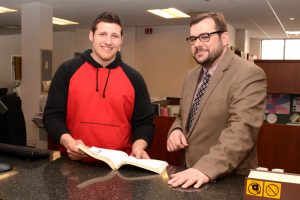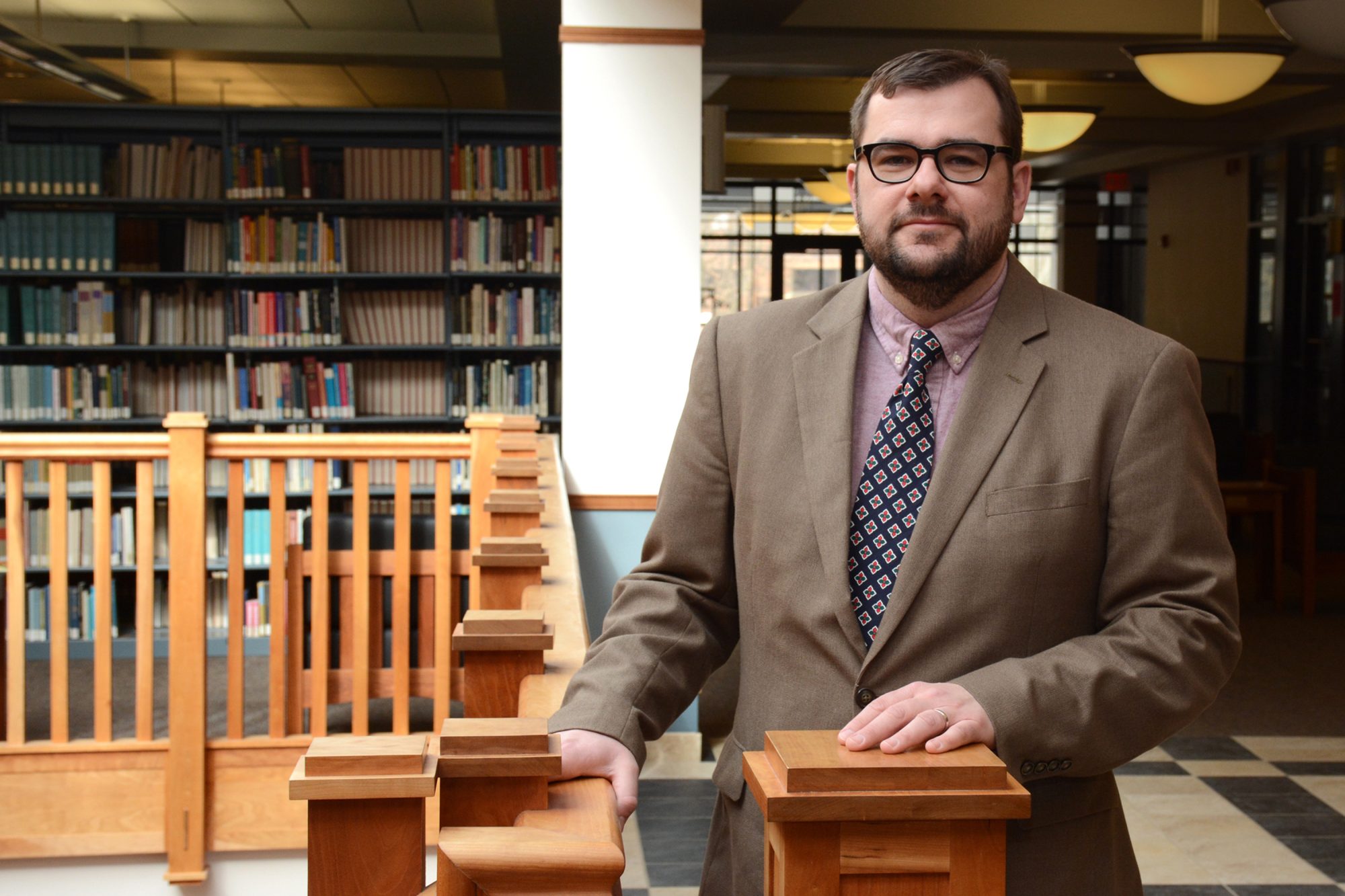When he was in the U.S. Navy, Shannon Pritting participated in months-long NATO humanitarian deployments that covered many European and Caribbean countries, supervised a nine-man team and held Top Secret Security Clearance. He was responsible for all incoming and outgoing data as well as computer and electronics maintenance, and all levels of information collection, organization, and access. And while these days he may be “deployed” in the stacks, he’s still helping others and leading the way in his role as Library Director at SUNY Poly.
“I’ve always found that I learned from my military service that you should constantly look to improve and assess how well you’re performing and seek new opportunities,” Pritting says.
 Earning his bachelor’s degree from SUNY Potsdam in English Literature, Writing, and Politics, Pritting also holds two master’s degrees: one in English from SUNY Oswego and another in Library and Information Science from Syracuse University.
Earning his bachelor’s degree from SUNY Potsdam in English Literature, Writing, and Politics, Pritting also holds two master’s degrees: one in English from SUNY Oswego and another in Library and Information Science from Syracuse University.
The position of Library Director, he says, is responsible for the overall strategic planning of the library, including facilitating partnerships across campus with faculty, students, and other academic support services.
“At SUNY Poly, creating and building upon existing relationships in a way that keeps the library a vital part of the campus community is an area on which the director should focus,” Pritting says.
As he points out, the role of librarians has changed drastically over the past 20 years and continues to evolve. Libraries traditionally have focused on collections in a variety of ways, highlighting the building of collections, teaching others how to access collections, and organizing collections.
“As collections and ways of finding information are now electronic, and discovery tools are much better, librarians can now focus less on collections and providing access, and more on helping students and faculty in the research process in deeper ways,” Pritting says. “Librarians also have been focusing more on publishing and building unique collections specific to the communities they serve, with many libraries leading movements in open access publishing, open access textbook programs, and helping students and faculty navigate the rapidly changing scholarly publishing landscape.”
Pritting’s blend of experience from a variety of areas in librarianship, including outreach, instructional design, information literacy, collection building, and resource sharing, were a perfect match for the demands and opportunities that come with his new position.
“At Oswego, I worked closely with our campus instructional designers to connect the Library into our Learning Management system, and coordinate our efforts with those of the campus,” he says.
In addition to his work in libraries, Pritting has been very active in the Information Delivery Services (IDS) Project, a resource-sharing cooperative in New York State that includes public and private libraries and works to continually implement and objectively evaluate innovative resource-sharing strategies, policies and procedures that will optimize mutual access to the information resources of all IDS Project Libraries. Pritting serves as both chair of the IDS Project’s Technology Development team and as an administrative team member on the project.
“As part of the IDS Project, I’ve become highly immersed in the technological innovations that are happening within library management software, which complements my experience with instructional technologies during my time at Oswego.”
Pritting has worked in a variety of areas in libraries, including teaching information literacy, access and collections, and reference. He’s also worked at small libraries at a community college, large research institutions, and other institutions that were innovative in providing students real-world learning experiences.
“SUNY Poly is a blend of all of these in that innovative and cutting-edge research is coming from SUNY Poly, and there is a great deal of focus on the student learning experience,” Pritting says. “Serving such a diverse set of needs for an institution at SUNY Poly will draw on several areas of my background in libraries to ensure researchers have access to the content they need, and that we’re also continuing to find ways for the library to collaborate in supporting faculty.”
Although he has traveled the world in his naval service, worked at libraries big and small, he says he’s drawn to SUNY Poly because of all the potential at hand for the library, and the campus as a whole.
“SUNY Polytechnic, in many ways, is the ideal environment for a library to be at the center of academics and the campus,” Pritting says. “SUNY Poly has a growing tight-knit academic community on campus with world class researchers and teaching faculty at both its Albany and Utica campus. There is also a spirit of innovation and dedication to students on both campuses that should provide many opportunities for collaborations in the future.”
